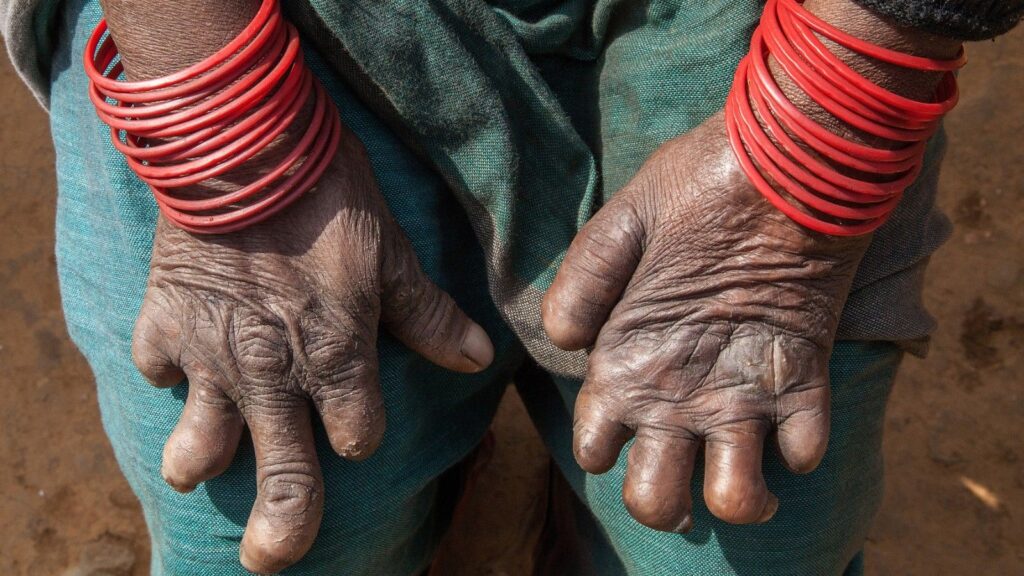Leprosy, also known as Hansen’s disease, is a progressive and chronic bacterial infection caused by the bacterium Mycobacterium leprae. It primarily affects the skin, eyes, nasal lining, upper respiratory tract and peripheral nerves (nerves outside the spinal cord and brain). Furthermore, leprosy also causes nerve damage, skin ulcers and muscle weakness. If left untreated, it can lead to significant disability and severe disfigurement. And while Hansen’s disease is one of the oldest diseases, it isn’t as contagious or as transmissible as it was in ancient times. This means, you can catch it only if you come in close and repeated contact with someone with untreated leprosy.

Signs and Symptoms of Hansen’s disease:
Unfortunately, once infected with Mycobacterium leprae bacteria, it takes about three to five years for signs of leprosy to appear. For this reason, it has no immediate symptoms to let you know that you’ve become infected. In general, Hansen’s disease affects the skin (in the form of lesions, rashes and bumps) and the peripheral nerves. Its symptoms differ depending on how much the disease has progressed. In worse cases, blindness and disfigurement can also occur.
The three main symptoms of Hansen’s disease include:
The Initial Symptoms:
- Skin patches with little to no sensations.
- Skin patches that may look red or have no pigmentation.
- Painless wounds on the hands and feet.
- Tingling or numbness in your hands, feet, legs and arms.
- Weakness in your muscles.
Additional Symptoms:
- Enlarged peripheral nerves.
- Loss of eyebrows or eyelashes.
- Thickness or stiffness of skin.
- Nosebleeds.
- Nasal congestion.
Symptoms in its Advanced Stage:
- Loss of vision.
- Paralysis.
- Shortening or curling of the toes and fingers.
- Disfigurement of the nose.
- Permanent damage to the hands and feet.
- Chronic foot ulcers that don’t heal on the soles of the feet.
Types of Hansen’s disease:
As discovered, there are three main types of Hansen’s disease.
Tuberculoid Hansen’s disease:
Typically, a person with this kind of Hansen’s disease experiences only minor symptoms, like a few sores. This happens as a result of a strong immune response. Tuberculoid leprosy is also known as paucibacillary leprosy.
Lepromatous Hansen’s disease:
People with this form of Hansen’s disease have widespread lesions and sores that affect their skin, organs, and nerves. Furthermore, lepromatous leprosy has a poor immune response and is more contagious than other forms of leprosy. Lepromatous leprosy is also known as multibacillary leprosy.
Borderline Hansen’s disease:
Both tuberculoid and lepromatous leprosy symptoms are present in this type of Hansen’s disease. Borderline leprosy is also called dimorphous leprosy.
Causes of Hansen’s disease:
Hansen’s disease is also called Hansen’s disease, after the scientist who discovered Mycobacterium leprae. The slow-growing bacterium called Mycobacterium leprae is the cause of Hansen’s disease. If your immune response to the bacterium is weak, then Mycobacterium leprae can spread through your peripheral nerves, your skin and, at times, deep into your tissues. Leprosy is transmitted through close physical contact with an infected person. However, it isn’t spread by casual contact with an infected person, like hugging, shaking hands, or sitting next to them. Fortunately, leprosy is a rare disease because more than 95% of people around the world are naturally immune to Mycobacterium leprae.










